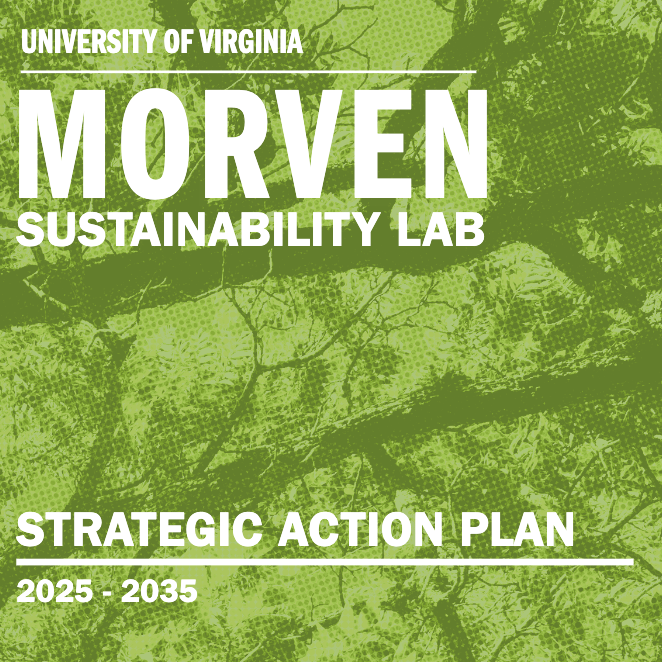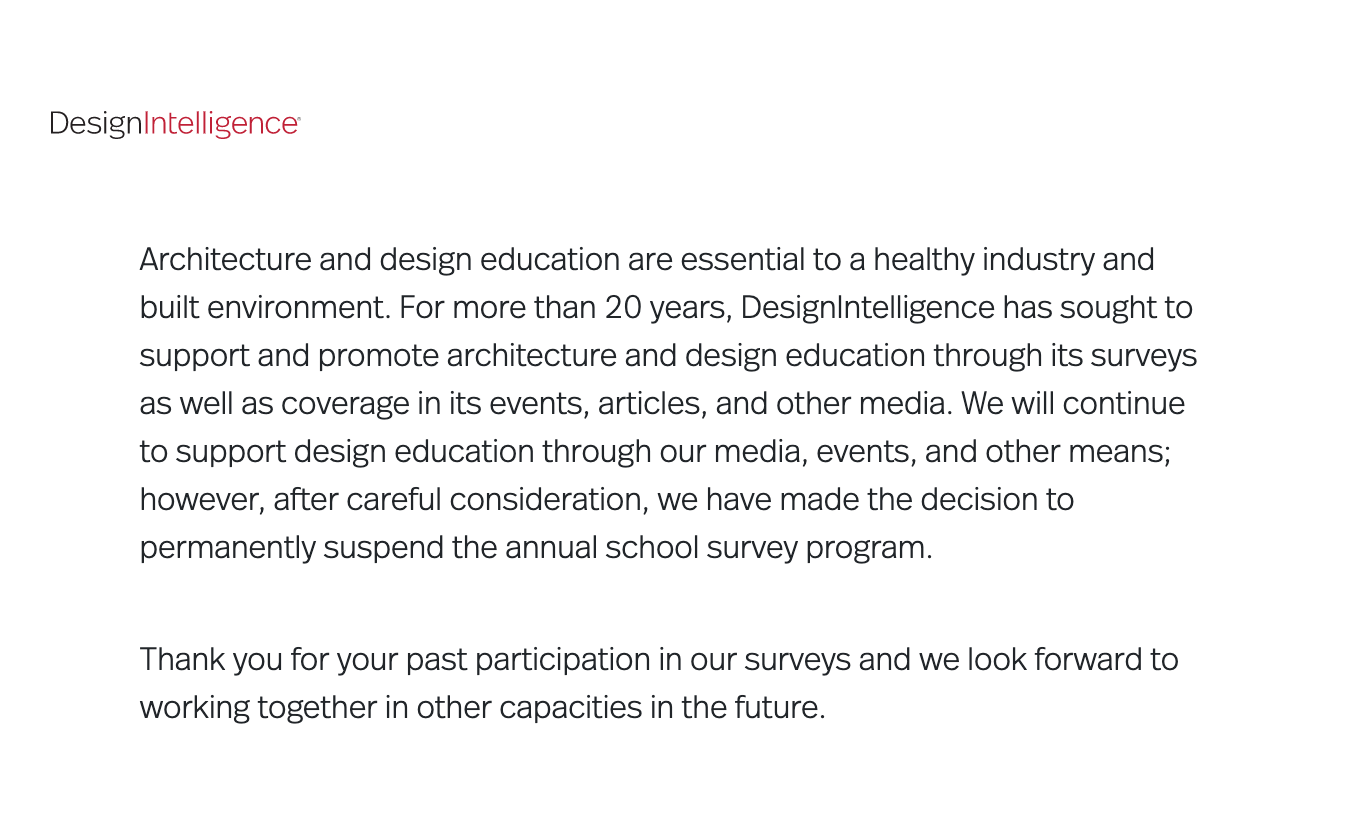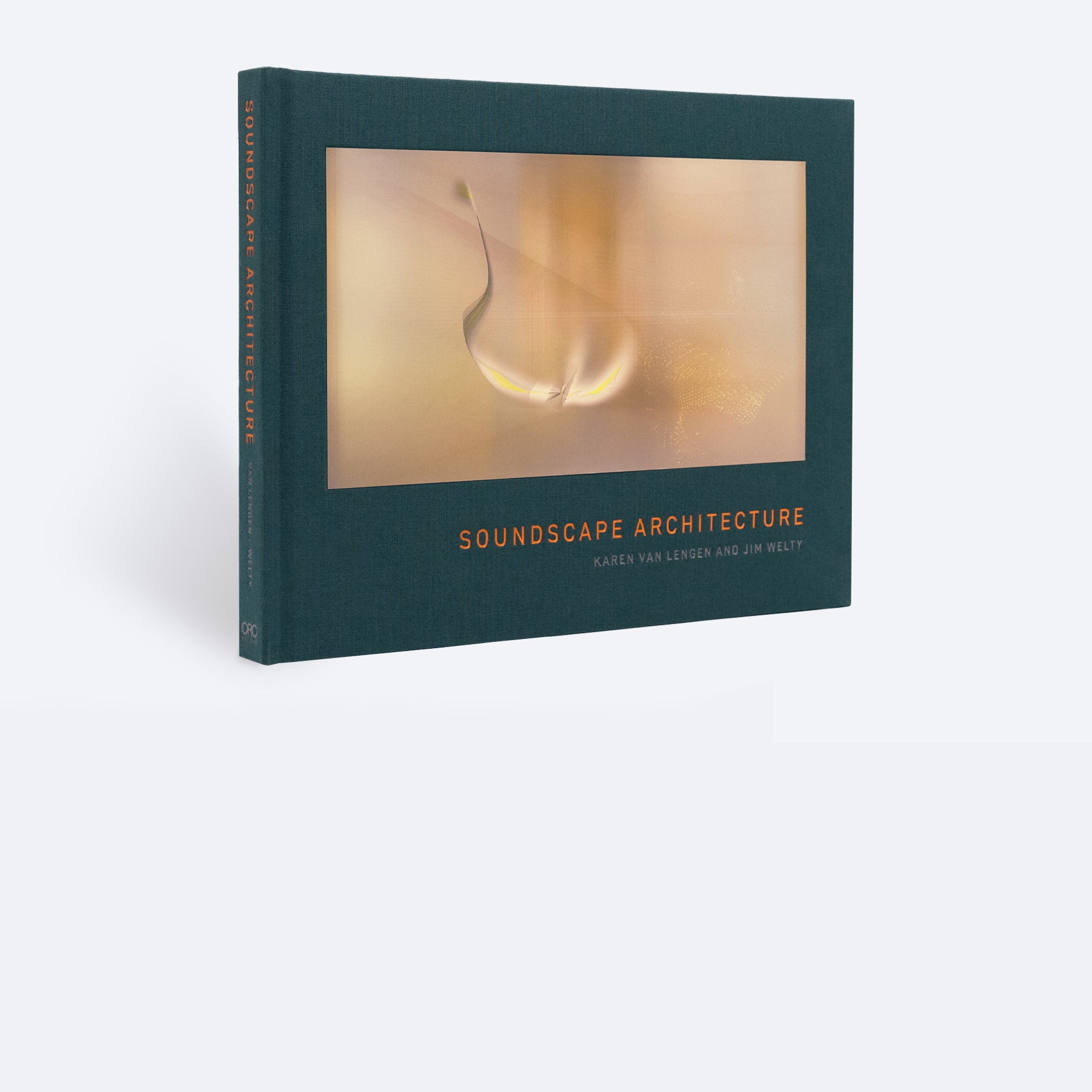
DESIGNINTELLIGENCE PERMANENTLY SUSPENDS ANNUAL SURVEY PROGRAM AND RANKINGS
DesignIntelligence has announced that it is permanently suspending its annual survey program.

This announcement comes following a recently published joint letter, signed by the deans of sixteen school of architecture nation-wide.
On September 6, Archinect described, "Academic ranking systems, and their methodology, in particular, are once again at the center of a nationwide conversation that has brought together the deans of sixteen prominent architecture schools. In a recently-published joint letter, the signees voice their concern over what they call "lack of rigor" — and the subsequent negative implications on the design community — of the annual DesignIntelligence survey and ranking, describing it as "out of touch" with the goals and ambitions of their respective programs."
The letter stated, "However well-intentioned they may be, we believe that the DI rankings have the potential to create a disservice to the public." The letter followed a series of attempts from school leadership to share their concerns about the surveys with DesignIntelligence, just one of which included that the rankings had a negative impact on smaller schools in particular due to the fact that fewer students and alumni were able to respond to the surveys.
The authors of the letter opened by stating. "For a number of us who lead institutions dedicated to the education of architects and landscape architects, the pandemic provided the opportunity to set competition aside and share our knowledge for the benefit of our students, present and future. In a series of informal discussions over the past two+ years, we learned that schools like ours have more in common than differences, and that our differences—in curriculum, faculty, facilities, and culture—are of benefit to our students and the professions."
The following points of concern with the survey were highlighted:
Our concerns about the DI survey can be summarized as follows:
• It lacks rigor.
• It hurts smaller schools, simply because they have fewer students and alumni to respond to surveys.
• It is out of step with student and faculty concerns about the future of design.
• It seems suspect that any private company, without oversight or independent verification, should have such influence over the career decisions of aspiring designers.
• It lacks evidence-based purpose, while accreditation offers a way for the public to compare programs.
• It takes up valuable faculty and staff time that could be better used to support students.
Closing with a confident "Design education is not a popularity contest," the letter stated that the represented schools were opting-out of future DI surveys.
Dean Malo A. Hutson recently shared the following communication with DesignIntelligence administration announcing the UVA School of Architecture's decision to opt-out.
In support of our colleagues in design and architecture schools across the nation and our larger design community, I write to let you know that we are opting out of participation this year (across our programs in architecture and landscape architecture). Our concern at UVA School of Architecture, like our peers, involves the lack of rigor in data collection and the lack of an evidence-based purpose. We also don’t support the use of a ranking system that doesn’t reflect the goals and ambitions of our faculty and students. While we have benefited from improvements in the rankings in more recent years, our academic mission and the profession has necessarily changed dramatically in the last two years, and we are working hard to ensure that we reflect inclusive excellence in our teaching and learning culture and in our operations overall. For these reasons, we are respectfully requesting that you ensure that UVA School of Architecture is not included in this year’s results.
Following over two decades of the DI rankings, we see the suspension of the annual survey program as an important acknowledgment of where we are today in design education and our professions, and an opportunity for continued cooperation and collaboration across schools of design.


